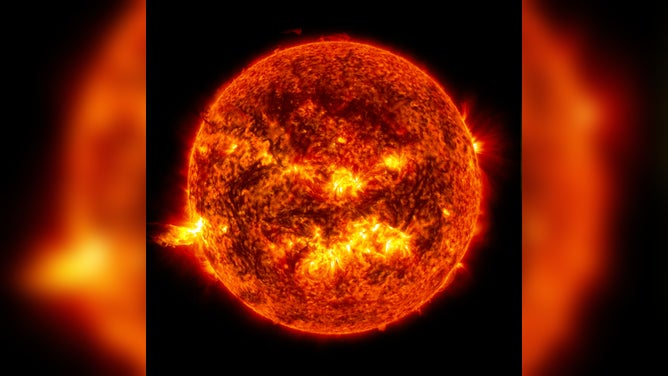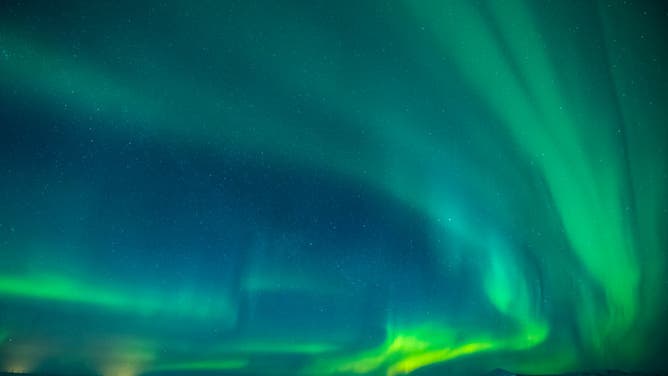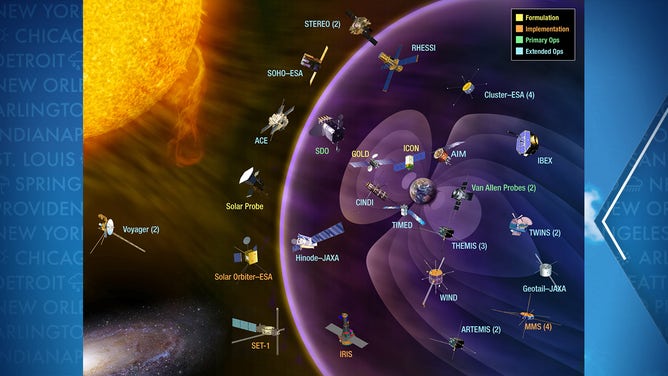7 facts about the Sun
It's the source of life on our planet -- learn some facts about the biggest - and only -- star of our solar system.

Sun Emits a Solstice Flare and CME on Nov. 30. 2017.
(NASA / SDO)
Hollywood might think it's home to the biggest stars, but not even Tom Hanks can top the star power of our sun. It's the source of life on our planet and the one thing the sunglasses industry could not live without. Here are seven facts about our sun:
The star at the center of our universe is the key to life…and a nice day at the beach. But the Sun is more than just a big ball of heat and light. Here are seven facts about our Sun:
1) The sun goes in 11-year cycles of sunspot activity

(NASA/SDO/AIA/HMI/Goddard Space Flight Center)
NASA scientists have learned that every 11 years, the sun's magnetic poles change their polarity -- which means if you had the power to stand near the sun's surface with the universe's most robust compass, what was north today would in 11 years become south… then revert to north 11 years later.
This 11-year oscillation is known as the Solar Cycle, and the changes the sun undergoes during this process affects its solar activity. Solar activity quiets down when the 11-year period is coming up, and the poles pull the switcheroo. This is known as a Solar Minimum.
Then about halfway through the period, solar activity ramps up to where sunspots and solar flares become more frequent and intense. This is known as the Solar Maximum. A few years later, the sun begins to quiet down again, the poles flip again, and the cycle repeats.
2) The sun is about 3-4 years from a solar maximum
There have been 24 solar cycles tracked so far, with Solar Cycle 25 declared underway in Sept. 2020. 2019 featured the last solar minimum and scientists believe we should reach solar maximum in July 2025.
Overall, researchers predict it'll be an overall weak sun cycle, matching Sun Cycle 24's below-average performance for sunspot count and sun energy released. But just because the cycle may end up below average, it doesn't mean the sun can't still occasionally put out intense solar flares.
3) Northern Lights sightings are more common with increased sunspot activity

Aurora Borealis spectacular view of the Northern Lights in the sky over Hotel Ranga tourist resort at Hella in South Iceland.
(Tim Graham / Getty Images)
As the sun heads toward solar maximum, expect to hear more about sunspots and solar flares, giving those in the North more opportunities to see the Northern Lights.
Streams of electrons inside those flares interact with the Earth's magnetic field and create the luminous greens, purples and blue lights that are the hallmark of the aurora.
4) A "solar" day is about 27 days on Earth on average
It takes the sun 27 days to make one full rotation, but if people could live on the sun, they'd find their days are not created equal.
The equatorial regions of the sun rotate faster and only take 24 days to make a full rotation, while the sun's polar regions take 36 days to make a complete spin.
5) Lightning is hotter than some parts of the sun

Lightning strikes are captured over the Freedom Tower in Lower Manhattan of New York City is seen from Hoboken of New Jersey, United States on September 13, 2021
(Tayfun Coskun/Anadolu Agency / Getty Images)
At about 50,000 degrees, a lightning bolt is 5 times hotter than the sun's surface. But the sun's outer corona is much, much hotter -- about 10 million degrees, or the power of 200 simultaneous lightning bolts.
6) In relative human lifespans, the sun is about 34 years old
The sun is about 4.5 billion years old and is in its early middle age phase, according to NASA. Scientists believe the Sun will burn another 5 billion years before swelling into a red giant and then going supernova.
Or put in human terms using 72 as the global life expectancy, the sun is about 34. But it has a steady job in a warm climate and an office with quite a view.
7) There are about 20 NASA satellites dedicated to studying the sun
Our most important star in the galaxy is under the constant watchful eye of satellites studying the sun and its effects on our home planet.

This image shows the Heliophysics System Observatory (HSO), a fleet of satellites performing heliophysics science investigations.
There are 20 current Heliophysics Missions underway at NASA right now.